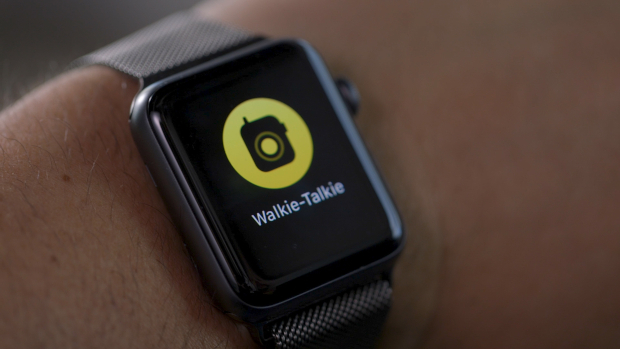
It’s time to liberate the Apple Watch from the iPhone
By the time watchOS 6 drops later this year, only the slimmest of threads will keep the Apple Watch tethered to the iPhone. The watch itself will soon have its own App Store. It will have more useful built-in apps, such as a calculator and voice memos, and long ago, the cellular models eliminated the need to rely on the iPhone for internet connection. It is already so close to being a standalone device, so it is time for Apple to snip the last thread and open it to buyers who do not have an iPhone.
The Apple Watch is already a hit with its current design, but a standalone Apple Watch may turn into a cultural phenomenon of the likes that Apple has not seen in years now.
Even handcuffed to the iPhone, the Apple Watch is already the undisputed leader of the smartwatch world, to the point that earlier this week research firm Strategy Analytics released a report claiming that Apple now commands 46% of the market. Samsung comes in second place at a measly 13%, while Fitbit commands a mere 10%.
With the rest of the smartwatch market so weak, making the Apple Watch a standalone device would be tantamount to going in for the kill.
Nor would venturing outside Apple’s garden in such a way be without precedent, as Apple followed a similar path in 2003 when it released a Windows version of iTunes. That was enough to transform the iPod into the generation-defining device it became and put the Cupertino company squarely on the road toward its current success. It is worth noting that nothing really killed the iPod—its technology simply got rolled into other, more convenient devices.
For now, at least, there is nothing on the horizon that looks like it could replace the smartwatch, many were all surprised that watches made a comeback in the first place.
Time for change
The timing could not be better, as Apple’s hardware is currently in a humdrum spot. The HomePod is failing to make a dent in the smart speaker market. The Mac is merely stable. Competing smartphones have improved enough that there are now legitimate arguments for claiming that this or that phone has a better camera or niftier features than the iPhone. The iPhone is still strong, but it has lost a lot of its mojo.
But not the Apple Watch. (Nor the iPad—which, notably, is used as a standalone device by many families and schools.) With every month, with every release, the reception seems to get only better. Apple may have had a hard time marketing the Apple Watch as a luxury accessory, but it has done a bang-up job of playing up how it can save lives.
And it could potentially save even more lives if the Apple Watch were on the wrists of more people. An “open” Apple Watch would make it more appealing as a health-monitoring device, particularly among older folks who may be enticed by the watch’s feel-good stories but shudder at the idea of slapping down around $1,000 (€9000) for a new iPhone to go with it.
Freeing the Apple Watch from the iPhone would allow various Apple Watch-related programs at insurance companies to claim a wider reach, such as the one at UnitedHealthcare that lets policyholders earn an Apple Watch for “free” if they consistently reach their exercise goals. Aetna announced a similar plan earlier this year. And the more devices that get on people’s wrists as part of programs like this, the more people in Apple’s ecosystem.
On a more speculative note, making the iPhone a standalone device may lead more third-party developers to start making apps for the watch. Third-party Apple Watch development has slipped off a bit as of late, in part because whatever you find on the Apple Watch usually pales in comparison to its parent app on the iPhone. Watch-based apps would suddenly be more important, though, as the watch is the only way a significant number of users can interact with them. That might lead to better app design, more updates, and more use on the consumer end.
For some users, and with recent advances in Apple’s technology, an Apple Watch may be more useful than a smartphone.
Watch out
There are some practical reasons why Apple cannot just flip a switch later this year and let other phone owners in on the fun. For one, “typing” on the Apple Watch remains tedious, and it is bad enough when you are navigating the new built-in App Store. Apple will first have to figure out how to make the onboarding process more palatable without a phone.
On that note, it is unlikely that Apple will go the iPod route and release an Android companion app (although, notably, there is an Apple ID-tied Apple Music app). If the Apple Watch ever shed its need to be paired with the iPhone, Apple would probably make it a truly standalone device. Apple would likely see the ability to beam data to other apps and to see the core Health app as one of the reasons to make a full jump to the iPhone. Apple would likely keep “untethered” Apple Watch limited to the GPS and cellular models.
Regardless of how Apple handles it, though, such a step is important if it wants to maintain the Apple Watch’s momentum. It currently does not show any signs of slowing down, but eventually Apple will reach saturation within its own market.
“Opening” the Apple Watch could allow Apple to grab an even larger share of the market, make it easier for friends with different phones to engage in activity competitions, and even serve as a reminder that Apple is still the undisputed leader in some of its product categories.
And maybe, just maybe, it will help make the world a slightly healthier place.
IDG News Service








Subscribers 0
Fans 0
Followers 0
Followers